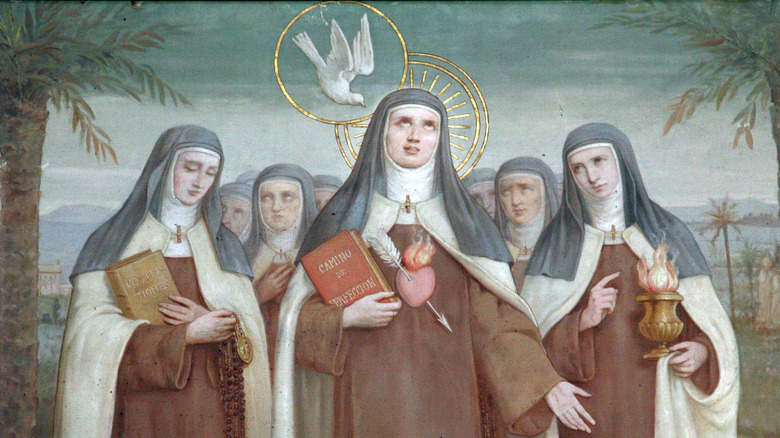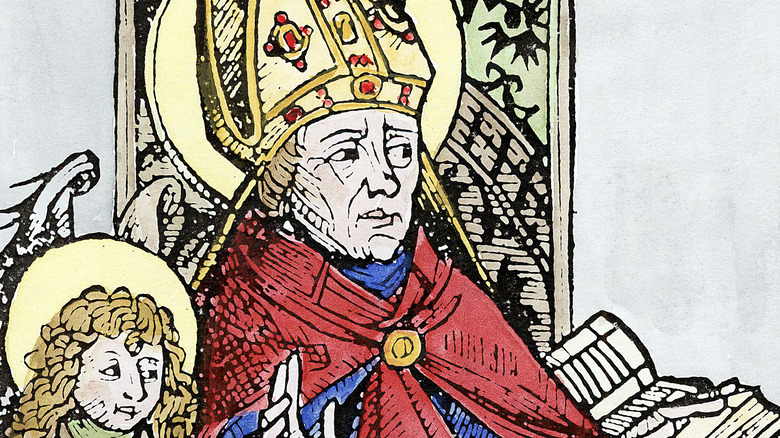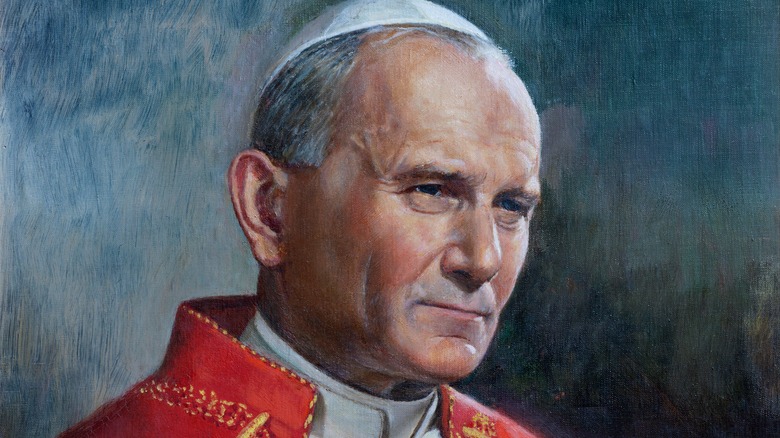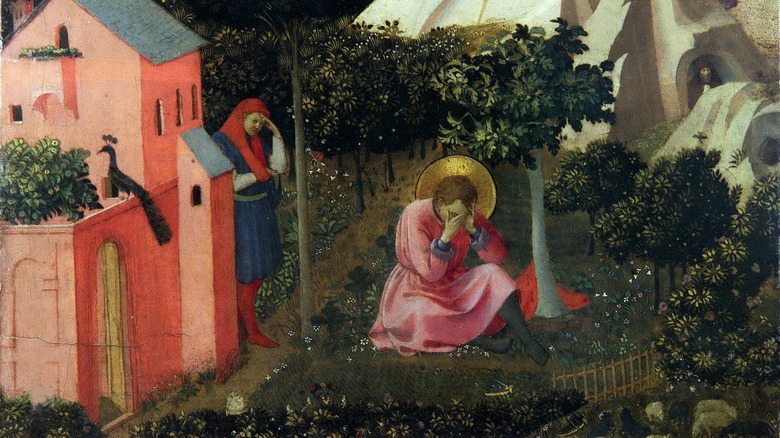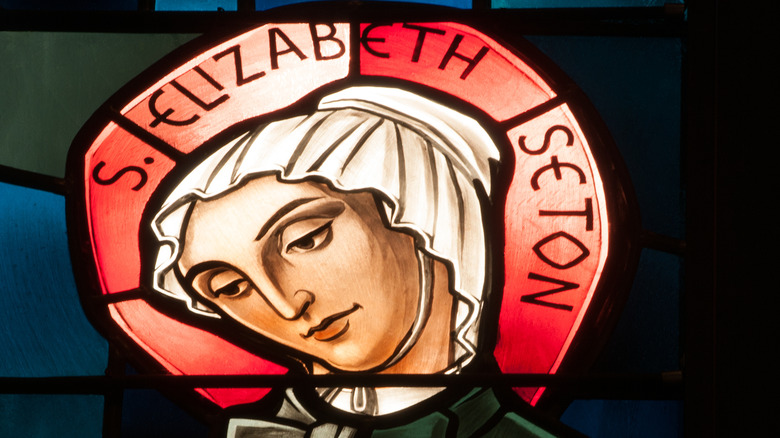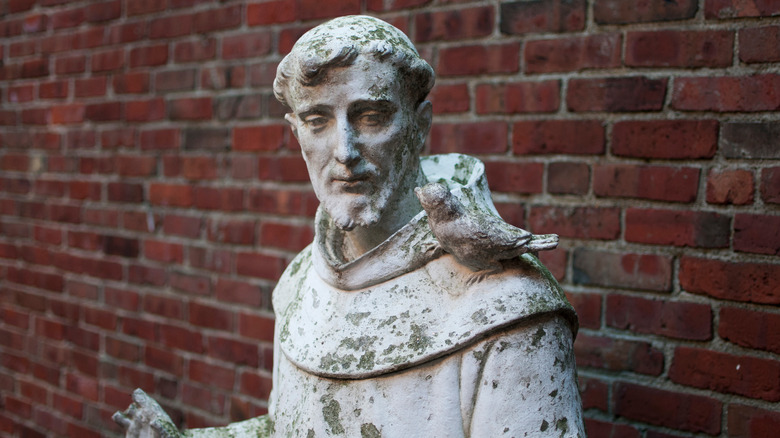The Catholic Church's Process For Canonizing A Saint, Explained
Over the centuries, the Catholic Church has identified over 10,000 people who have earned the title of Saint, according to Britannica. Some have detailed biographies that include, for certainty, their dates of birth and death, where they lived and ministered, etc., while the historical details of just as many are lost to history. The list of saints includes men, women, and children; many were martyred, just as many died of natural causes. The list also includes people from all six of the seven continents (no one from Antarctica yet), according to GCatholic.
The first person made a saint by papal decree was Ulrich, bishop of Augsburg, all the way back in 993, according to a companion Britannica report, while the most-recent person (or more accurately, people) to be named saints were 10 men and women from varying nations and backgrounds. According to the Catholic News Agency, Pope Francis said at the ceremony, which was held at St. Peter's Square in Vatican City, "Holiness does not consist of a few heroic gestures but of many small acts of daily love."
Becoming a saint is (mostly) not a matter of the Pope simply putting pen to paper. There's a process, according to Al Jazeera, although in extraordinary cases shortcuts can be taken.
Step One: Meet The Basic Requirements
In order to be named a saint, there are two basic requirements that are, for all intents and purposes, non-negotiable. The first and most obvious requirement is that the person is a Catholic, but as it turns out, there's some wiggle room in this requirement as well. As Learn Religions notes, history has pinned the official beginning of the Catholic Church at 590 AD (although the Church itself claims that it was founded six centuries before that, by Jesus Christ himself). But an untold number of saints lived and died before the historical beginning of the Catholic Church. As Busted Halo notes, several of those saints, including Saint Augustine of Hippo (depicted above) are also recognized as saints by the Eastern Orthodox Church and Oriental Orthodox Church.
The second basic requirement is that the person is dead. According to The Washington Post, no living person can be deemed a saint or even considered for sainthood.
Step 2: Be Dead For 5 Years
In order for a person to be considered for sainthood, at least five years must pass after their death before the process can even begin, according to BBC News. The reason for this is that emotions can run high after a person's death, and a rush to get the person deemed a saint could result in unacceptable shortcuts being taken. Some saints have had to wait considerably longer than five years in order to be named a saint. For example, the 800 Italian martyrs (officially the Otranto Martyrs) had to wait a few centuries between their martyrdom and sainthood. Saint Bede, the theologian, by comparison, had to wait over 1,100 years after his death for his sainthood.
The five-year waiting period can be waived in extraordinary circumstances, however. For example, Pope Benedict XVI waived that requirement for his predecessor, Pope John Paul II (pictured above). Similarly, Pope Francis waived the requirement for Mother Theresa.
Step 3: Live a Life of 'Heroic Virtue' (Or Be Martyred)
In order to be considered for sainthood (assuming the candidate has been dead for at least five years and was, while they lived, a Catholic –- or at the very least, a Christian), the person must have lived a life of "heroic virtue," according to The Conversation. Further still, the qualifications for "heroic virtue" are laid out pretty plainly: the candidate's life must have, in some extraordinary and consistent way, been lived in a way that exemplifies the four "cardinal" virtues – prudence, temperance, fortitude, and justice –- and the three "theological" virtues -– faith, hope, and charity.
In order to determine if a candidate met those requirements, according to BBC News, the local bishop of the place where the candidate lived will investigate the person's life and, if they pass muster, be deemed a "Servant of God." After that designation, a Vatican committee will look more deeply into the matter and, if they approve, the candidate's case will be sent to the pope, while the matter continues to be investigated, this time looking for miracles (more on that in a moment). The process can be fast-tracked, in a manner of speaking, if the candidate was martyred -– which is to say, they gave up their life for their faith.
Step 4: Miracles and Beatification
After the initial investigations, according to BBC News, the matter of the candidate for sainthood is sent to the pope. If he agrees that the person did, indeed, live a life of heroic virtue, they're deemed "venerable." However, there's more work to be done, and that means that the Church will look into whether or not the candidate can be credited with any miracles after their death. If it can be verified that the candidate interceded on behalf of an individual who prayed to them and performed a miracle, then it's proof not only that the candidate is in Heaven, but that they hear the supplicant's prayers and can act on them.
How are miracles verified? By way of example, a companion BBC News report notes that, in the case of Pope John Paul II, the Vatican investigated reports by a French nun who claimed that she was cured of Parkinson's disease after she and her sisters prayed for the intercession of the former pope. The Vatican looked into the matter, including by reviewing her medical records, and determined that there was no logical medical explanation for her sudden cure. Ergo, Pope John Paul II was credited with a miracle.
Once a miracle has been verified, the person is "beatified." That is not the same thing as having sainthood conferred on them, but it is the penultimate step. In the case of martyrs, proof of miracles is not required for sainthood, notes BBC News.
Step 5: Get Canonized, And Now You're Finally A Saint
The final step in becoming a saint is canonization, according to Al Jazeera. This happens after a second miracle has been attributed to the candidate, although as BBC News notes, that requirement can be waived in the case of martyrs. Once all of the i's have been dotted and all of the t's crossed, the candidate is "canonized" by the pope –- which is to say, officially deemed a saint.
Canonization masses are a huge deal, according to BBC News. For the 2014 canonization of Pope John Paul II, thousands flocked to Vatican City, and the Church even released mobile apps so the ceremony could be broadcast to those who couldn't make it.
Canonization is more than just words on paper recognizing the saint. He or she can now be given patronage, according to Al Jazeera. The faithful can beseech him or her for intercession, churches can be named for them, feast days can be appointed for them, relics can be displayed publicly, and the saint can be depicted with a halo.
